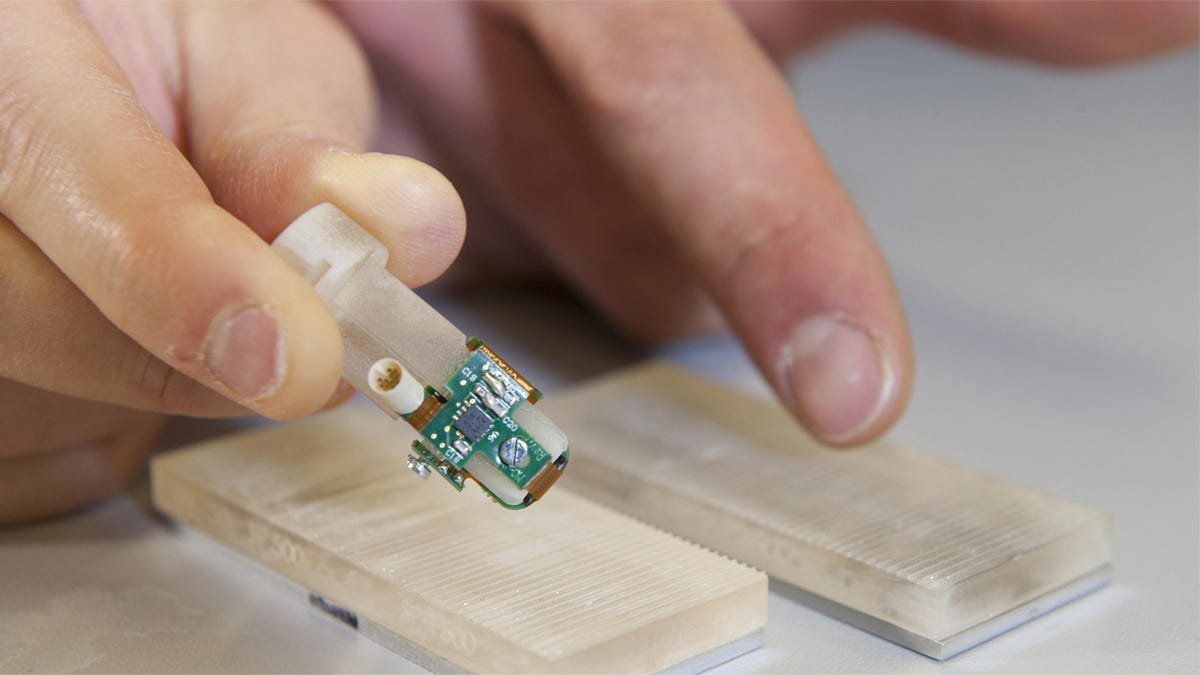Bionic fingertip lets an amputee feel textures again
Interfacing directly with someone's nerves, the device allows an amputee to distinguish between rough and smooth.
An artificial fingertip that enables the wearer to distinguish textures in real time could lead to significant advancements in bionic prostheses.
The device, which interfaces directly with the nerves of the amputee, requires surgical installation but can be tested on non-amputees without surgery by inserting needles into the skin of someone's arm. It was developed by neuroengineer Silvestro Micera and his team at Switzerland's Ecole Polytechnique Fédérale de Lausanne and Italy's Scuola Superiore Sant'Anna. The results were published Tuesday in the journal eLife .
The fingertip is apparently the first that can detect not just pressure, but the difference between rough and smooth.
To test the fingertip's effectiveness, the team enlisted Dennis Aabo Sørensen of Denmark, who lost his left hand 11 years ago handling fireworks. They connected the fingertip to nerves in his arm, using wires to integrate the sensors with his nerves. Because Sørensen had worked with the team previously on bionic prosthetic development, the interface with his ulnar and median nerves was already in place.
Then the fingertip was moved over pieces of plastic engraved with different patterns, some smooth, some rough. The sensors moved over the plastic, created an electrical signal and sent it to a PC to be interpreted into tactile information about the surface. This final signal was sent up the wires and into Sørensen's nerves. A blindfolded Sørensen then reported what he felt.
He was able to tell the difference between rough and smooth with 96 percent accuracy.
"The stimulation felt almost like what I would feel with my hand," he said in a statement. "I still feel my missing hand, it is always clenched in a fist. I felt the texture sensations at the tip of the index finger of my phantom hand."
A diagram demonstrates how the fingertip works.
Testing the fingertip on non-amputees means that development can go a lot faster. Instead of the surgical interface, needles are inserted into the skin and attached to the median nerve in the test subject's arm. The test subject wears an EEG cap, touching the plastic surfaces with fingers and separately with the artificial fingertip.
This allows the team to see how the test subject's brain responds to both kinds of touch. Whether using the artificial fingertip or their own hand, test subjects' brains show the same activity. Moreover, they are able to differentiate between rough and smooth with 77 percent accuracy. This is not as accurate as Sørensen, but demonstrate the feasibility of a temporary needle interface over surgery.
"This study merges fundamental sciences and applied engineering: it provides additional evidence that research in neuroprosthetics can contribute to the neuroscience debate, specifically about the neuronal mechanisms of the human sense of touch," said researcher Calogero Oddo of the BioRobotics Institute of the Scuola Superiore Sant'Anna.
"It will also be translated to other applications," Oddo said, "such as artificial touch in robotics for surgery, rescue and manufacturing."


